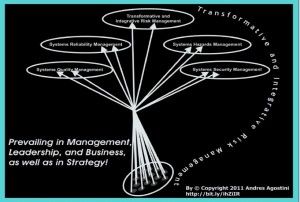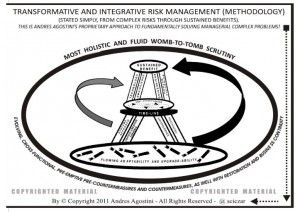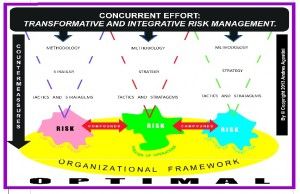In is now quite clear that aging is not a simple phenomenon and it will not be overcome by using simple approaches. We need to increase the complexity and sophistication of our efforts in order to be in a better position to develop strategies against it. For this reason, I set up the ELPIS Foundation for Indefinite Lifespans (www.elpisfil.org) which is a scientific research organisation aiming to study aging from a complex evolutionary perspective.
The foundation’s research methodology is based mainly upon the ELPIS hypothesis (www.elpistheory.info). The initials stand for ‘Extreme Lifespans through Perpetual –equalising Interventions’. I developed this hypothesis in 2010 whilst trying to examine the reason behind the presence of aging. It was clear that aging is not an essential component of our evolutionary development, and if we find ways to study why nature has developed it, we may then be able to eradicate it. Currently, the chances of us dying from aging are heavily against us. By developing suitable interventions, we may be able to equalise the odds against us dying (i.e. remove aging as a cause of death).
Our method is different from most existing approaches aiming to eliminate aging. We are mainly interested in the ‘connection-approach’ and not so much in the ‘component-approach’. We believe that it is important to study how the different components of the organism are interconnected and regulated, rather than just repair the individual components. It is the ‘why aging happens’ rather than the ‘how it happens’ that interests us most. In order to make this clear let me mention an analogy with poliomyelitis.
Polio
*How it happens? There is inflammation and necrosis leading to damage of motor neurons and, ultimately, muscle weakness and paralysis
* Why it happens? Because the poliovirus causes it
Aging
* How it happens? There is cellular and molecular damage through oxidation and glycation, as well as damage to mitochondria, DNA etc.
* Why it happens? Because evolution has selected reproduction (and thus aging) as a mechanism for maximising the use of thermodynamical resources, and so ensure the survival of the species.
In this analogy, the obvious cure for polio is to somehow eradicate the poliovirus itself, and not just keep repairing the already damaged motor neurons. And in the case of aging, the best tactic is to somehow change the reason why aging happens, instead of just keep repairing already existing damage.
Attempts such as SENS and similar, aim to repairing existing damage, were as we aim primarily to eliminate the evolutionary reasons behind aging in the first place. This is not to say that we are not at all interested in damage repair. In fact, one of our main projects deals with the repair problem. But, overall we want to explore the evolution of aging and not its secondary effects.
We see aging as a specific and well-defined process. Our aim is unambiguous: we seek to eliminate this particular process. By eliminating aging we will have a life without age-related disease and degeneration, and a lifespan without a predetermined end. We do not seek immortality. In order to be immortal, one has to totally and permanently eliminate all causes of death (not just reduce their incidence). We seek to eliminate aging as one of the causes of death. People will still die from any other cause. In this case, our lifespan would be ‘indefinite’ because the current absolute limit of around 110–120 years will be lifted. There would not be a pre-defined limit; therefore the lifespan would be indefinite. It will not be infinite. This distinction is crucial because it clarifies any ambiguity and vagueness in the terminology. We do not seek eternal youth. We merely concentrate on the process of aging as one of the many other causes of death, the same as other researchers concentrate on the cure for cancer or the cure for HIV infection.
Within ELPIs Foundation we have scientific advisors from a wide range of disciplines, including biomedicine, transhumanism, social sciences, neurosciences, complex systems, and systems biology. Our affiliate researchers are scientists who conduct research in their own facilities and share information and ideas with each other. We are always looking for visionary, ‘out-of the box’ scientific thinkers, those who ‘zoom out’ of reductionist views, and see aging in a wider perspective without being uncritically blinkered by existing dogma.
We ask questions such as: If aging happens because nature withholds resources from the soma and diverts these to the germ-line, how can we reverse this process and divert resources back to the soma in order to maximise biological repair? What is the role of digital hyperconnectivity of billions of humans (the Global Brain) in facilitating such a transition? Where does aging and the elimination of aging fit within an ever-evolving technological tendency of nature? Some ideas we currently explore are:
* Induced Whole-Body Somatic Cell Turnover, for regenerative repair
* Aging and evolutionary changes as applied to human sexual patterns, reproduction, ecosystems, society and the planet
* The role of energy, entropy and thermodynamics in metasystem transitions with regards to human longevity
*Theoretical aspects of Germ-line penetration
May symposium
In May 2014 we will be organising the second symposium on ‘Pathways to Indefinite Lifespans’ in Larnaca, Cyprus. This is a small, very select, highly focused meeting exploring the most cutting-edge research and ideas with regards to the total abolition of aging. We aim to discuss new insights and hypotheses in the fields of biomedical technology, evolutionary anthropology, complex systems, a hyperconnected society, and digital communications technology. The meeting will be accessible live online and will include both local and remote presentations. Those interested in coming need to contact me at: [email protected]. We are also exploring the possibility of offering PhD positions to exceptional candidates, in order to facilitate research in this area.
This article was originally published here: http://hplusmagazine.com/2013/11/05/defying-aging-the-elpis-…lifespans/
 The Lifeboat community doesn’t need me to tell them that a growing number of scientists are dedicating their time and energy into research that could radically alter the human aging trajectory. As a result we could be on the verge of the end of aging. But from an anthropological and evolutionary perspective, humans have always had the desire to end aging. Most human culture groups on the planet did this by inventing some belief structure incorporating eternal consciousness. In my mind this is a logical consequence of A) realizing you are going to die and B) not knowing how to prevent that tragedy. So from that perspective, I wanted to create a video that contextualized the modern scientific belief in radical life extension with the religious/mythological beliefs of our ancestors.
The Lifeboat community doesn’t need me to tell them that a growing number of scientists are dedicating their time and energy into research that could radically alter the human aging trajectory. As a result we could be on the verge of the end of aging. But from an anthropological and evolutionary perspective, humans have always had the desire to end aging. Most human culture groups on the planet did this by inventing some belief structure incorporating eternal consciousness. In my mind this is a logical consequence of A) realizing you are going to die and B) not knowing how to prevent that tragedy. So from that perspective, I wanted to create a video that contextualized the modern scientific belief in radical life extension with the religious/mythological beliefs of our ancestors.


